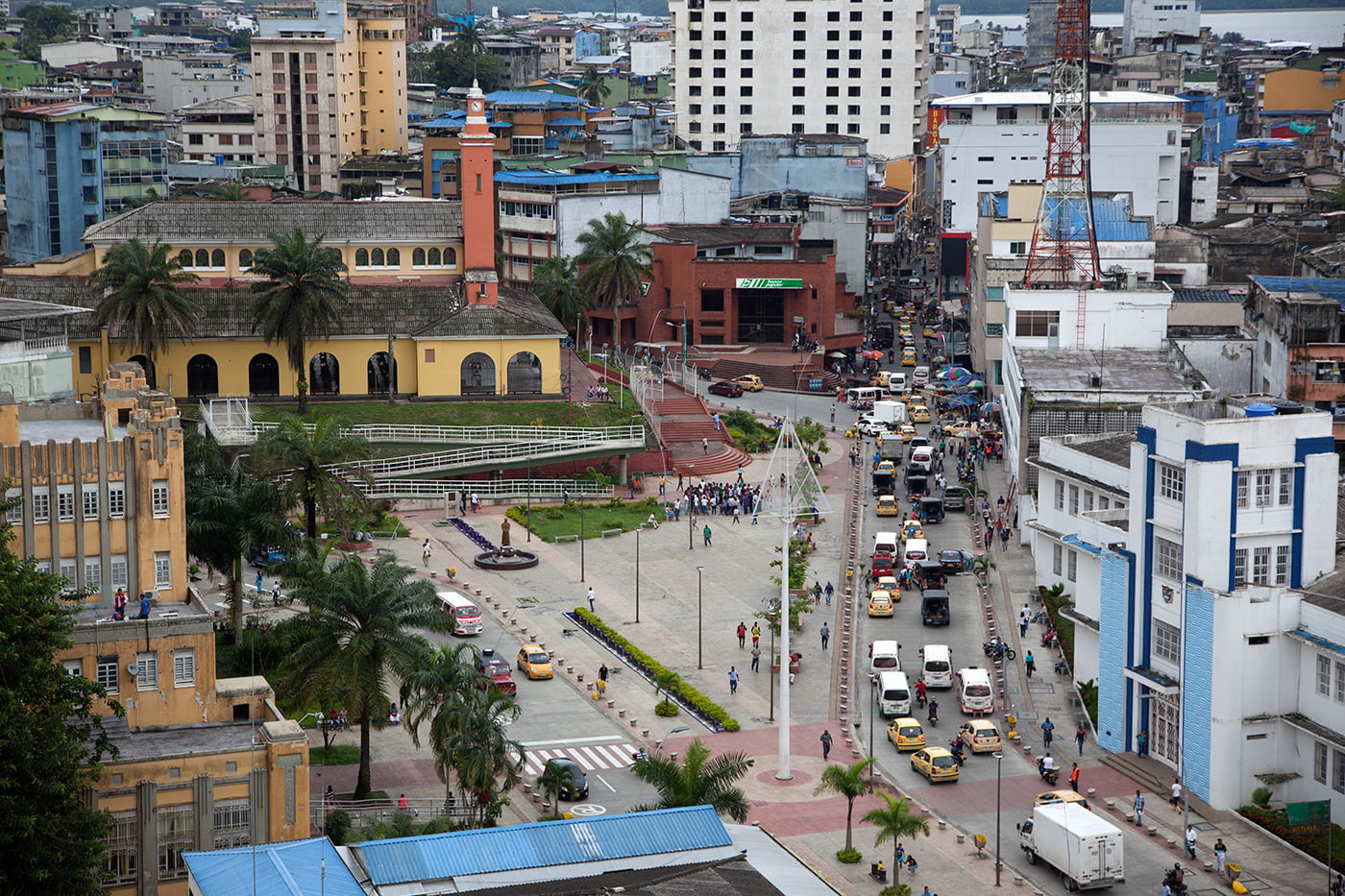Subscribe to New Worlder on Substack.
Subscribe to our Substack newsletter to receive access to the latest stories and podcast episodes from NEW WORLDER. It’s free to subscribe, though additional content is available for paid subscribers.
As Colombia’s 50-year civil war ends, many regions of the country have begun to open to tourism. Drug trafficking and guerrilla activity long kept the Pacific Coast of the country off limits to tourism, however, for the past several years it has quietly attracted a growing number of adventurers seeking out good waves, whales, pristine rainforest, and vibrant Afro-Colombian and indigenous cultures that have yet to see supermarkets and iPads. Outside of the port city of Buenaventura, the region is mostly undeveloped, with just a few small villages scattered about that must be reached by tiny planes from Medellín or by infrequent boat trips. It is Colombia at its most wild and raw, where the Andes crash into a rich sea and swarms of colorful crabs cover forest trails.

I didn’t know much about Colombia’s Pacific Coast until a few years ago when a chef in Bogota named Rey Guerrero wrote me out of the blue. He has a restaurant in Bogota called Rey Guerrero Pescaderia Gourmet that specializes in traditional recipes from the region. I’ve been fortunate enough to visit several times, learning about piangua, a black clam that lives along the coast, which he serves in ceviche (above). Guerrero also makes various typical rice and seafood dishes like Arroz Tumbao and Arroz Tumbacatre, and incorporates the region’s typical products like the fruit borojó, coconut milk, and the herb cilantro cimmarrón into his dishes.

The fishing village of Nuqui (above) is one of the main access points for tourists, sport fishermen, and surfers entering the region, as is Bahía Solano further north. It’s a small grid of unpaved streets with a few stores and basic restaurants like Aqui Es Chiringa, which serves local dishes including coconut rice and sancochado de pescado (fish stew). Stilted wooden houses line a canal that runs along the edge of town. Most ecolodges are spread out along the coast south of Nuqui and are reached by a one to two hour boat ride.



Punta Brava is the southernmost ecolodge from Nuqui, just past the town of Arusí. It’s perched on a rocky bluff with ocean on three sides. There are two beaches that come and go with the tides. It’s more isolated than some of the other places to stay that are further north. Here, you are alone. From the open-air lodge, which has just a handful of cabins, you can hike to empty several beaches, through jungle trails, and up shallow riverbeds to waterfalls where Blue Morpho butterflies flutter about.

The Chocó department (above) is one of the wettest places on the planet, with up to 400 inches of annual rainfall. The forests stay lush and green year-round, leaving most trails thick with mud. A machete and rubber boots are essential gear for most hikes here.

From late July to late September, thousands of humpback whales (above), as well as several other species, come to Colombia’s Pacific Coast from the waters off Chilean Patagonia to mate and calve their young. With some patience, they can be seen right from the beach all along the coast. Every ecolodge in the region has a small motorized boat that will run trips to get a closer look. While some NGOs have set up guidelines as to how to approach the whales without scaring them off, the region lacks formal regulations for whale watching, which could be detrimental to the migration in the near future if not taken seriously.

There is a vast variety of fruits (above) found throughout Colombia’s Pacific, such as chontaduro, a palm fruit (called pijuayo in Peru and pupunha in Brazil), as well as curuba (banana passion fruit), pitahaya (dragon fruit), uchuva (gooseberry), and zapote.


Deep within the rainforest just outside of Buenaventura is San Cipriano, a community of 450 or so originally formed by runaway slaves. Far from any roads, the village is reached by an old rail track that is used by small carts powered by adapted motorcycles. There’s only one line, so when another cart is coming, one of the carts needs to be pulled off the track and everyone has to get out until it passes. It usually happens a couple of times during the 30-minute ride through the thick jungle. The village borders a river with a rocky beach where inner tubes made from old truck tires can be rented to float lazily in the clear water. A few restaurants serve typical dishes like encocadas de jaiba (crab chowder) and pargo frito (fried red snapper).



Colombia’s largest port is Buenaventura, a bustling, gritty city with high crime that is suddenly trying to attract tourists. A modern, glass and steel hotel tower, the Cosmos, now stands near the waterfront, with a rooftop infinity pool and bar overlooking the bay. The malecón area has been cleaned up, attracting sunset walks to browse the handicraft stalls.



Viche, a sugarcane based spirit (above), is produced artisanally within small communities throughout the region. It’s often sold at roadside stands in recycled liquor bottles. At Café Pacifico in Buenaventura, they macerate native fruits to the region, such as chontadura and açaí, which few realize grows here. “There’s tons of it but Colombians don’t even realize it’s here,” the owner Saul Monard told me.
Subscribe to our Substack newsletter to receive access to the latest stories and podcast episodes from NEW WORLDER. It’s free to subscribe, though additional content is available for paid subscribers.